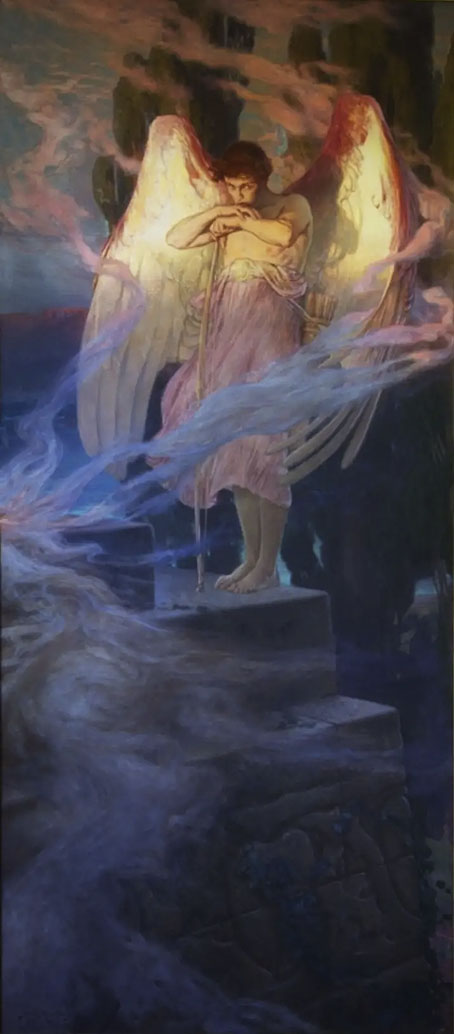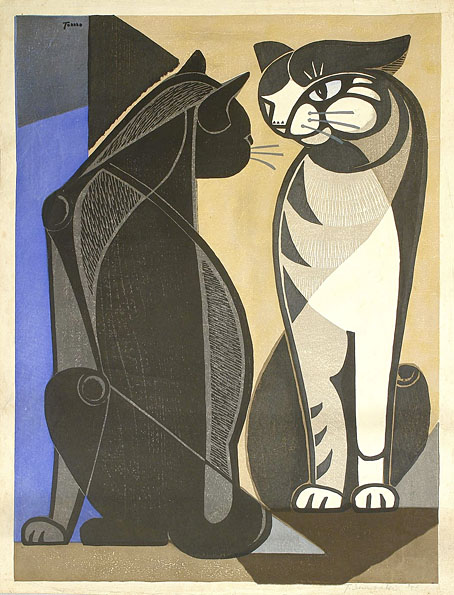
East Totem West head shop poster, from DJ Food‘s latest delve into the psychedelic poster auctions.
• The week in science-fiction illustration: Joachim Boaz on Rodger B. MacGowan’s “approachable New Wave art”; and Andrew Liptak talks to Adam Rowe about Rowe’s Worlds Beyond Time: Sci-Fi Art of the 1970s.
• At The Wire: Philip Brophy sets out his intentions for the return of his long running column on film music.
• At Public Domain Review: Gustatory Wisdom: Bruegel the Elder’s Twelve Proverbs (1558).
Though the project’s genesis predated Roeg’s involvement, Cammell said that his codirector “needled” him: “He provoked me, made me focus more and more clearly on what I was trying to say.” It was Roeg’s visual sensibility, Cammell graciously admitted, that “mobilized” and “improved” his own concepts. It’s appropriate that the movie concerns two men who become fully realized only in meeting and merging with each other. Turner, said Cammell, “believes himself to be at the end of his creative life. He’s a man in despair. And then destiny brings him his mirror image, Chas, the man in whom he sees what he was and what he could be again.”
Roeg and Cammell were hardly in despair in 1968; both were novices in the foothills of their own artistry. It is not fanciful, though, to see in their collaboration something like the same lightning connection that forms between Turner and Chas. Cammell said that he set out “to make a transcendental movie.” In achieving that goal, he stretched and challenged not just himself but cinema too. Even as Performance closed the lid definitively on the sixties, it opened the door to a radical new way of making films.
Ryan Gilbey on Donald Cammell and Nicolas Roeg’s Performance
• At A Year In The Country: Broadcast and Pathways Through Otherworldly Villages.
• “Pilot is an elegant and expressive display serif,” says Kim Tidwell.
• Winners of the 2025 World Nature Photography Awards.
• New music: Forgotten Worlds by Rodrigo Passannanti.
• Janus Rose presents her Digital Packrat Manifesto.
• RIP Jamie Muir and Gene Hackman.
• Pilots Of Purple Twilight (1981) by Tangerine Dream | Pilots (2000) by Goldfrapp | I’m With The Pilots (2001) by Ladytron




